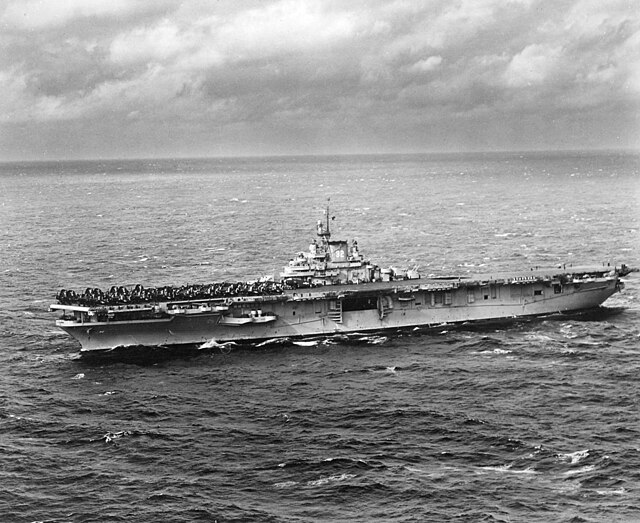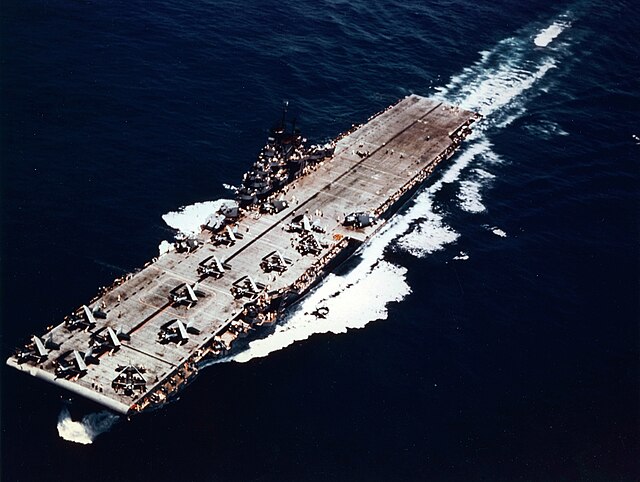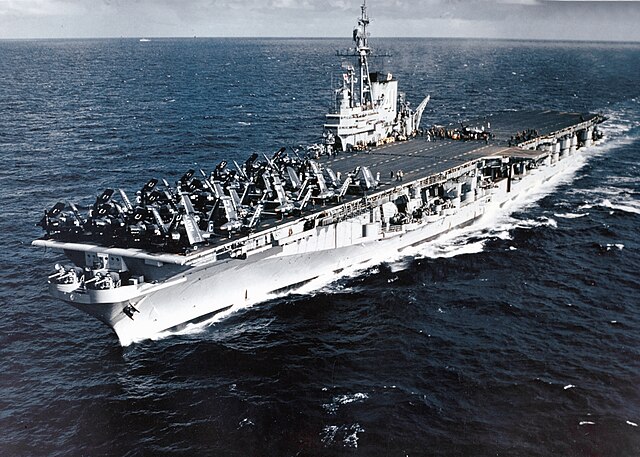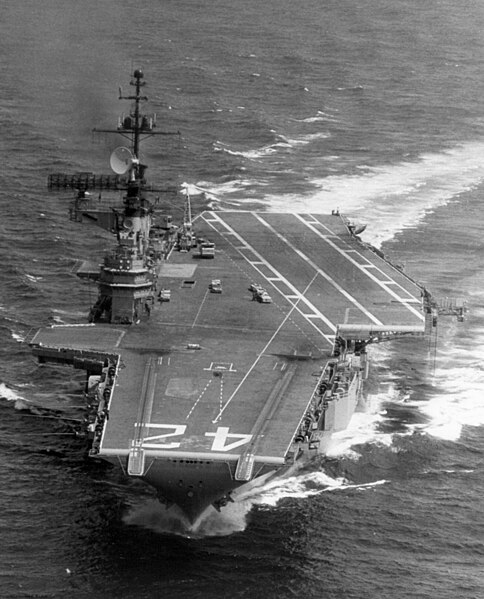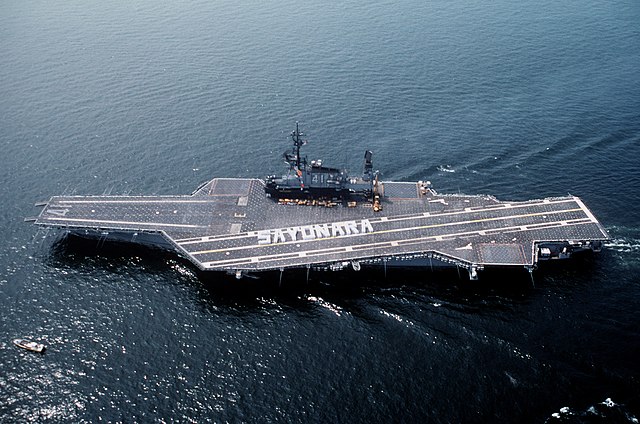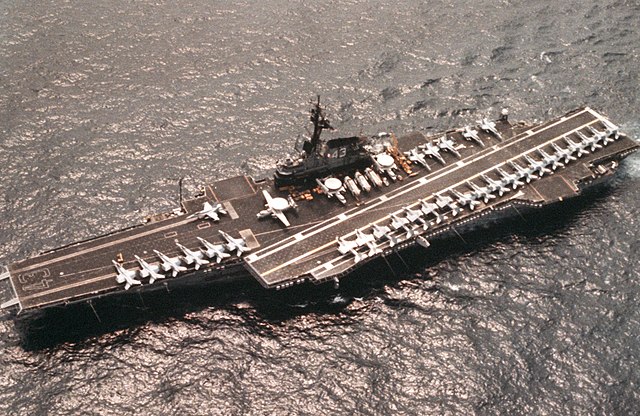Essex-class aircraft carrier
The Essex class is a retired class of aircraft carriers of the United States Navy. The 20th century's most numerous class of capital ship, the class consisted of 24 vessels, which came in "short-hull" and "long-hull" versions. Thirty-two ships were ordered, but as World War II wound down, six were canceled before construction, and two were canceled after construction had begun. Fourteen saw combat during World War II. None were lost to enemy action, though several sustained crippling damage due to kamikaze attacks. Essex-class carriers were the backbone of the U.S. Navy from mid-1943 and, with the three Midway-class carriers added just after the war, continued to be the heart of U.S. naval strength until supercarriers joined the fleet in the 1950s, 1960s and 1970s. Several of the carriers were rebuilt to handle heavier and faster aircraft of the early jet age, and some served until well after the Vietnam War. Of the 24 ships in the class, four of the carriers: Yorktown, Hornet, Lexington, and Intrepid, have been preserved as museum ships.

USS Philippine Sea (CVA-47) underway in 1955
1941 design plans for the Essex class.
Leyte underway in 1948
Yorktown at sea in 1943
Midway-class aircraft carrier
The Midway-class was a class of three United States Navy aircraft carriers. The lead ship, USS Midway, was commissioned in September 1945 and decommissioned in 1992. USS Franklin D. Roosevelt was commissioned in October 1945, and taken out of service in 1977. USS Coral Sea was commissioned in April 1947, and decommissioned in 1990.
USS Midway before SCB-110 upgrade
Franklin D. Roosevelt under way in 1969
Image: USS Midway (CV 41) leaving Yokosuka, Crew spelling Sayonara
Image: USS Coral Sea (CV 43) aerial photo in 1986



